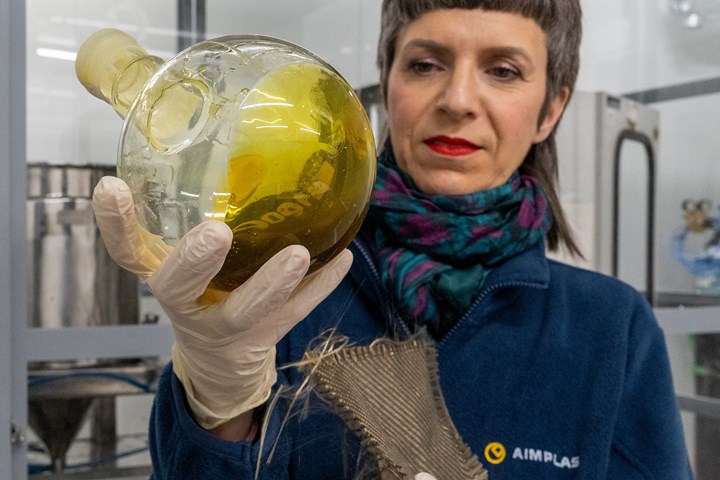ELIOT Project finds solvolysis best method for aerospace biocomposites recycling
Aimplas and TNO study analyzed 12 methods for six different biocomposites. Solvolysis and pyrolysis proved the two most promising alternatives tested in large-scale production at a pilot plant.

Photo Credit: Aimplas
Biocomposite materials are seeing increased use in the fabrication of aviation components in order to address environmental concerns. The materials use natural fibers for reinforcement and resins from renewable sources. However, the novelty and heterogeneous nature of biocomposite thermoset materials and the fact that they lack carbon fibers — which have a high market value — make it difficult to find an efficient management solution when these materials become waste at the end of their useful life.
Aimplas, the Plastics Technology Centre (Valencia, Spain), and the Dutch research centre TNO (Hague, Netherlands) have completed the ELIOT Project, a study that involved an in-depth review of current recycling technologies for the composites and biocomposites used in the aeronautics sector and an analysis of the best alternatives on a pilot plant scale that are also technically and financially feasible. As a result of the study, solvolysis was found to be the best method of the 12 technologies analyzed for recycling six different biocomposite materials.
The study is targeted at searching for cost-effective recycling technologies that enable the aeronautics industry to guarantee the sustainability of its components in the search for new solutions aligned with the circular economy. The results show that pyrolysis emits 17% more carbon dioxide and consumes twice as much heat as solvolysis, which entails additional associated costs. Solvolysis uses solvents as a substitute for heat, but these solvents are recovered with great efficiency and reused in the process. The ELIOT project has also shown that solvolysis works even better on large biocomposites.
For both pyrolysis and solvolysis, additional purification steps are required to be able to use the pyrolysis liquid and the distilled product, respectively. These estimates were made based on a processing plant with a capacity of 10 kilotonnes of biocomposites per year.
Other technologies analyzed in the study included mechanical recycling, dissolution, enzymatic degradation, gasification and composting.
The ELIOT Project received funding from the European Union’s Horizon 2020 research and innovation program within the framework of the Clean Sky Joint Technology Initiative under grant agreement number 886416.
Related Content
-
One-piece, one-shot, 17-meter wing spar for high-rate aircraft manufacture
GKN Aerospace has spent the last five years developing materials strategies and resin transfer molding (RTM) for an aircraft trailing edge wing spar for the Airbus Wing of Tomorrow program.
-
Cryo-compressed hydrogen, the best solution for storage and refueling stations?
Cryomotive’s CRYOGAS solution claims the highest storage density, lowest refueling cost and widest operating range without H2 losses while using one-fifth the carbon fiber required in compressed gas tanks.
-
Materials & Processes: Fabrication methods
There are numerous methods for fabricating composite components. Selection of a method for a particular part, therefore, will depend on the materials, the part design and end-use or application. Here's a guide to selection.

.png;width=70;height=70;mode=crop)











